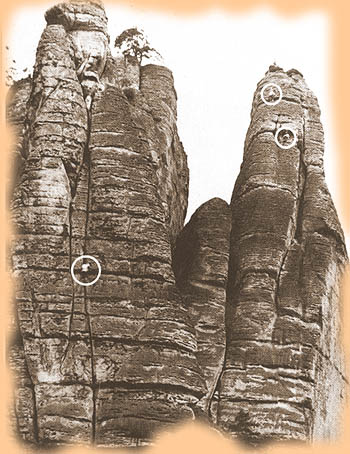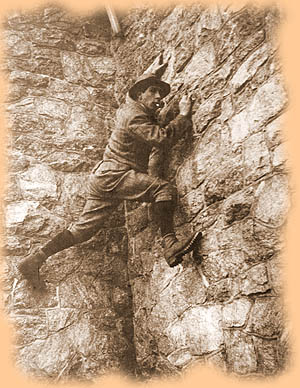Rock climbing was a huge part of mountaineering that began in the Victorian age. However, it is known that it became very popular in the end of the 19th century in three different areas of Germany, England, and Italy. Rock Climbing then went from a part of necessity to a sport in and of itself such as making it a conquest of getting to the top of the mountains.

Rock climbing was first called a sport in the 1880s when there was an ascent of the Naples Needle that happened by Walter Parry Haskett Smith, often called “the (British) Father of Rock Climbing, who was bringing attention to the sport. This was made very popular because of its level of difficulty of the sport. Smith learned about the sport by seeing a photo of the Needle in a shop window that made him want to be a part of it. In the UK, there were a few hotels that specialized in rock climbing sports as well as vacations.
There were many efforts that were made by pioneers, and there were over 500 climbers who enjoyed the sport in the UK around 1903 and by 1930 there were over 200 climbing clubs all over the UK. The first solo rock climb was done by a 17-year-old German high school student named Georg Winkler. He was the first student who was able to teach others about the sport in Germany.
Rock climbing became more and more popular as there were different systems of grading that were then developed to show the difficulty of the climb as well as to classify the different locations on levels of difficulty.

Ancient Dates of Rock Climbing
During ancient times, there are many important rock climbing developments as well which allow for there to be depictions that share the history of the sport. Back in 400 BC, there were ancient water color pictures that show Chinese men climbing rocks. In the 14th century, there are other depictions in the U.S. southwest that show the Anasaz is who are people who dwelt on cliffs that were climbing on the cliffs and these were depicted in caves. In 1492, Antoine de Ville climbed to the top of Mont Inaccessible which is in France, and he used new techniques to be able to climb to the top of the mountain. In 1695, Martin Martin shared the traditional practice of climbing in Scotland for a crowd to see. In 1786, Mont Blanc was climbed with very modern equipment.
Rock climbing has its first ascent in ancient times and this has continued to allow enthusiasts of rock climbing to incorporate new methods of climbing in the past few years from rope climbing to bouldering and many others. Rock climbing is one of those sports that has ancient roots but also continues to be relevant in modern times for all of the needs that enthusiasts may have as they continue to climb to the highest possible locations these days and enjoy this ancient sport of rock climbing.
